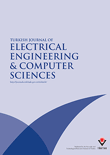
Turkish Journal of Electrical Engineering and Computer Sciences
Scope & Guideline
Bridging Theory and Practice in Electrical Engineering
Introduction
Aims and Scopes
- Machine Learning and Artificial Intelligence:
The journal consistently publishes research on machine learning and AI, showcasing applications in various domains such as healthcare, agriculture, and security. This includes novel algorithms, model optimization, and real-world implementations. - Signal Processing and Image Analysis:
A significant focus is placed on signal processing techniques, particularly in medical imaging and multimedia applications. This encompasses methods for enhancing, classifying, and analyzing signals and images to improve diagnostic accuracy and efficiency. - Embedded Systems and IoT Applications:
Research on embedded systems and the Internet of Things (IoT) is prevalent, emphasizing the design and implementation of systems that integrate hardware and software for monitoring and control purposes in various environments. - Power Systems and Energy Management:
The journal addresses topics related to electrical power systems, including control strategies, optimization methods, and renewable energy integration, aiming to contribute to more efficient and sustainable energy management practices. - Computer Vision and Robotics:
Research on computer vision techniques and robotic systems is a core area, focusing on automated recognition, tracking, and control systems that enhance the capabilities of robots and contribute to advancements in autonomous technologies. - Data Security and Privacy:
The journal includes studies on cybersecurity, particularly in the context of data protection, intrusion detection systems, and privacy-preserving technologies, reflecting the growing importance of secure data management in the digital age.
Trending and Emerging
- Deep Learning Applications:
There is a significant surge in research related to deep learning, particularly in fields like medical diagnostics, image processing, and natural language processing. This indicates a broader acceptance and application of deep learning methods across various domains. - Smart Energy Systems and Renewable Integration:
Research on smart grids, energy management, and the integration of renewable energy sources is increasingly prominent, driven by the global push for sustainability and efficient energy use. - Explainable AI (XAI):
The emergence of explainable AI as a theme reflects the growing need for transparency and accountability in AI systems, particularly in critical applications such as healthcare and finance. - Blockchain Technology and Applications:
The incorporation of blockchain technology into various applications, particularly in data security and privacy, is a rising trend, highlighting its potential to revolutionize data management and integrity. - Human-Computer Interaction (HCI):
Research focusing on improving user interaction with technology, particularly in the context of intelligent systems and robotics, is gaining attention, emphasizing the need for user-centric design in technological advancements. - Cybersecurity Innovations:
As digital threats evolve, there is a noticeable increase in research dedicated to innovative cybersecurity solutions, including intrusion detection systems and privacy-preserving techniques.
Declining or Waning
- Traditional Control Systems:
While control systems remain relevant, there has been a noticeable shift away from traditional control methods towards more advanced techniques such as adaptive and predictive control strategies, possibly reflecting the need for more sophisticated solutions in complex systems. - Basic Electrical Engineering Concepts:
Research focusing solely on fundamental electrical engineering principles has decreased. This may indicate a trend towards integrating these concepts with advanced technologies, rather than treating them as standalone topics. - Low-level Programming Languages:
As the focus of applications shifts towards higher-level abstractions and frameworks, there is less emphasis on research centered around low-level programming languages, which are increasingly being overshadowed by more user-friendly and efficient programming paradigms. - Conventional Hardware Design:
Research on conventional hardware design, particularly for basic electronic components, appears to be waning as the field moves towards integrated solutions and software-defined approaches that offer more flexibility and scalability.
Similar Journals

AUTOMATIC CONTROL AND COMPUTER SCIENCES
Pioneering Insights in Automation and System EngineeringAUTOMATIC CONTROL AND COMPUTER SCIENCES is an esteemed academic journal dedicated to the exploration and advancement of automation, control systems, and computer science disciplines. Published by PLEIADES PUBLISHING INC, this journal serves a global audience from its base in the United States and provides a platform for high-quality research and innovative applications across its converged years, spanning from 1973 to 2024. As of 2023, it is categorized in Q3 in Control and Systems Engineering and Q4 in both Signal Processing and Software, reflecting its valuable contributions to these fields of study. Despite its modest rankings in Scopus, it demonstrates a commitment to disseminating knowledge and fostering scholarly dialogue among researchers and practitioners. Although not an open-access journal, AUTOMATIC CONTROL AND COMPUTER SCIENCES remains vital for academics seeking to deepen their understanding and expertise in control theories and computational methodologies.
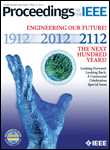
PROCEEDINGS OF THE IEEE
Showcasing Breakthroughs that Shape Tomorrow's TechnologiesPROCEEDINGS OF THE IEEE, published by the IEEE-Institute of Electrical and Electronics Engineers Inc, stands as a premier journal within the fields of Computer Science and Electrical and Electronic Engineering. Since its inception in 1963, it has provided a platform for cutting-edge research and developments, showcasing innovative studies and breakthrough technologies that influence academia and industry alike. With an impressive Q1 ranking in both fields according to the latest quartiles, this journal ranks among the top in its categories, holding a prestigious spot in the Scopus metrics—ranking 1st in General Computer Science and 4th in Electrical and Electronic Engineering. Researchers, professionals, and students benefit from its comprehensive scope that includes a wide range of topics from algorithms and computing systems to circuit design and network technologies. Additionally, though not available as an open-access publication, its significant impact factor signifies its role in advancing scholarly dialogue and innovation in these fast-evolving fields. With contributions from leading experts and a commitment to high-quality research, the PROCEEDINGS OF THE IEEE continues to be an essential resource for anyone invested in technological progress and scientific inquiry.
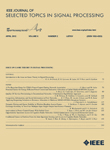
IEEE Journal of Selected Topics in Signal Processing
Elevating Standards in Signal Processing ScholarshipIEEE Journal of Selected Topics in Signal Processing is a premier academic publication dedicated to the advancement of knowledge in the field of signal processing. Published by IEEE-INST ELECTRICAL ELECTRONICS ENGINEERS INC, the journal boasts an impressive impact factor that places it in the top tier of its category; ranked Q1 in both Electrical and Electronic Engineering and Signal Processing for 2023. Given its esteemed standing, the journal serves as a vital resource for researchers, professionals, and students alike, providing cutting-edge insights and developments that shape the future of signal processing. The journal encompasses a wide array of topics relevant to the evolving landscapes of electrical engineering and computer science, with particular significance in innovative applications and methodologies. As a platform for disseminating high-quality research, this journal remains essential for those seeking to stay at the forefront of this dynamic field. You can explore the latest contributions and findings, benefiting from the journal's influential status in the realm of signal processing.

Studies in Informatics and Control
Advancing Knowledge in Informatics and ControlStudies in Informatics and Control is a distinguished academic journal published by the NATL INST R&D INFORMATICS-ICI, specializing in the interdisciplinary fields of Computer Science and Electrical and Electronic Engineering. With an ISSN of 1220-1766 and a recognized standing within its field, this journal aims to foster innovation and disseminate high-quality research findings from 2010 through 2024. It maintains a significant presence in the academic landscape, holding a Q3 ranking in both Computer Science (miscellaneous) and Electrical and Electronic Engineering categories for 2023, which underscores its commitment to advancing knowledge and technology in these areas. While the journal is not open access, it provides valuable insights and results that are essential for researchers, professionals, and students striving to develop their expertise in informatics and control systems. Based in Romania, its contributions traverse international boundaries, appealing to a global audience keen on the latest developments and trends within these rapidly evolving fields.

IEEE Latin America Transactions
Bridging Knowledge Gaps in Electrical and Computer SciencesIEEE Latin America Transactions is a distinguished journal published by the Institute of Electrical and Electronics Engineers (IEEE), focusing on the broad and impactful fields of Computer Science and Electrical and Electronic Engineering. With an ISSN of 1548-0992, this journal serves as a vital platform for scholarly communication, featuring high-quality research articles that contribute to advancements in these technical domains. As of 2023, it holds a commendable Q2 ranking in Computer Science (Miscellaneous) and a Q3 classification in Electrical and Electronic Engineering, reflecting its significant contributions to the field. The journal spans from 2003 to 2024, ensuring a rich archive of contemporary and relevant research. Researchers and professionals can access its articles without open access restrictions, enhancing its visibility and reach across the global scientific community. Set against the backdrop of its operational base in Piscataway, NJ, this journal not only serves as an academic repository but also plays a crucial role in bridging knowledge gaps in Latin America and beyond.

Electronics, published by MDPI since 2012, stands as a pivotal open-access journal that caters to a wide spectrum of disciplines within the electrical and electronic engineering domain. With a strong commitment to disseminating innovative research, this journal has garnered notable recognition, achieving a Q2 ranking in multiple pertinent categories, including Computer Networks and Communications, Control and Systems Engineering, and Signal Processing. Its editorial standards and open-access format enhance the visibility and accessibility of high-quality research, making critical advancements in technology available to a global audience. Located in Switzerland, the journal is positioned to foster international collaboration and dialogue among researchers, professionals, and students dedicated to exploring the evolving landscape of electronics and its applications. With an E-ISSN of 2079-9292, the journal is meticulously indexed in reputable databases like Scopus, further solidifying its relevance and influence in the engineering community.
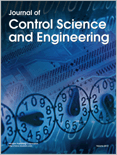
Journal of Control Science and Engineering
Shaping the Future of Control Science Through Open AccessThe Journal of Control Science and Engineering, published by HINDAWI LTD, is a prominent open-access journal that has been disseminating pioneering research since 2007. With its ISSN 1687-5249 and E-ISSN 1687-5257, the journal serves as a crucial platform for researchers, professionals, and students engaged in the fields of Computer Science Applications, Electrical and Electronic Engineering, and Modeling and Simulation. Holding a Q3 quartile ranking in 2023 across these categories, the journal maintains rigorous academic standards and is recognized for its contributions to advancing knowledge and technology in control science. The journal's current Scopus rankings highlight its significance, with impressive percentiles placing it within the top tier of its fields. Readers can access a wide range of high-quality research articles through its open access model, further establishing the journal as an essential resource for anyone seeking to broaden their understanding and application of control principles.
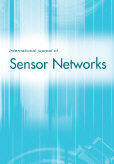
International Journal of Sensor Networks
Pioneering Research in Networked Sensing TechnologiesInternational Journal of Sensor Networks, published by INDERSCIENCE ENTERPRISES LTD, is a pivotal resource in the realms of Computer Networks and Communications, Computer Science Applications, Control and Systems Engineering, and Electrical and Electronic Engineering. With an ISSN of 1748-1279, this journal serves as a vital platform for disseminating innovative research and developments related to sensor networks, highlighting groundbreaking work that spans from fundamental sensor technology to sophisticated applications in various engineering fields. The journal, which operates without an open access model, features a convergence of contributions from 2006 to 2024, holding a Q3 ranking across multiple categories as per the 2023 categorization, which reflects its standing and influence within the academic community. Targeted at researchers, professionals, and students, the International Journal of Sensor Networks not only fosters interdisciplinary dialogue but also drives the advancement of technology by publishing quality papers that address contemporary challenges in sensor networks and their applications.

CAAI Transactions on Intelligence Technology
Transforming Ideas into Intelligent SolutionsCAAI Transactions on Intelligence Technology is a premier peer-reviewed journal published by WILEY, dedicated to advancing the fields of Artificial Intelligence, Computer Networks and Communications, Computer Vision and Pattern Recognition, Human-Computer Interaction, and Information Systems. Since its inception in 2017, this Open Access journal has rapidly ascended the ranks, achieving Q1 quartile status across multiple categories as of 2023, and is recognized for its rigorous standards and innovative research dissemination, evidenced by impressive Scopus rankings, including Rank #12 in Computer Vision and Pattern Recognition. Through its commitment to providing a platform for high-quality research, the journal invites contributions from scholars globally, fostering a collaborative environment that stimulates intellectual exchange and encourages advancements in intelligent technology. Addressed to researchers, professionals, and students alike, CAAI Transactions on Intelligence Technology serves as a vital resource for those aiming to stay at the forefront of technological innovation.
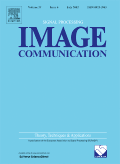
SIGNAL PROCESSING-IMAGE COMMUNICATION
Elevating Standards in Image Communication ResearchSIGNAL PROCESSING-IMAGE COMMUNICATION, published by Elsevier, is a leading journal in the fields of Computer Vision, Signal Processing, and Electrical Engineering. With an impressive range of Quartile rankings in 2023, including Q1 in Electrical and Electronic Engineering and Q2 in Signal Processing, this journal is vital for researchers and professionals seeking the latest advancements and comprehensive studies in image communication technologies. Issued in the Netherlands, SIGNAL PROCESSING-IMAGE COMMUNICATION has been an essential resource since its inception in 1989, fostering innovation and collaboration among academia and industry. The journal provides a platform for high-quality peer-reviewed research, addressing significant challenges and solutions in the convergence of image processing and communication. Although currently not an Open Access journal, it offers subscription options that ensure a broad dissemination of groundbreaking knowledge. With a robust reputation reflected in its Scopus ranks, this journal serves as an indispensable reference for students and experts aiming to stay at the forefront of developments in this dynamic field.